A 21st Century Mill
With all our high-tech machinery, the inside of Tower Mill looks a lot different to the mills that were in operation back when Manchester was known as Cottonopolis.
It’s been well documented that English Fine Cottons has brought cotton-spinning back to the UK, but there’s a lot more to producing beautiful cotton-yarns then just spinning.
We carefully planned our production processes and installed the right technology to enable us to produce the best quality yarns in the world. Our cotton goes through a long list of preparation stages before we spin it into a yarn – and the work doesn’t stop after spinning either.
In this video you can find out exactly what happens to the cotton at each stage and on the pictures below you can see how the cotton changes throughout the process.
The blowing room is where the bales of cotton fibre are opened, plucked, cleaned and blended. Our blowing room has six different stages, starting with the bale plucker.
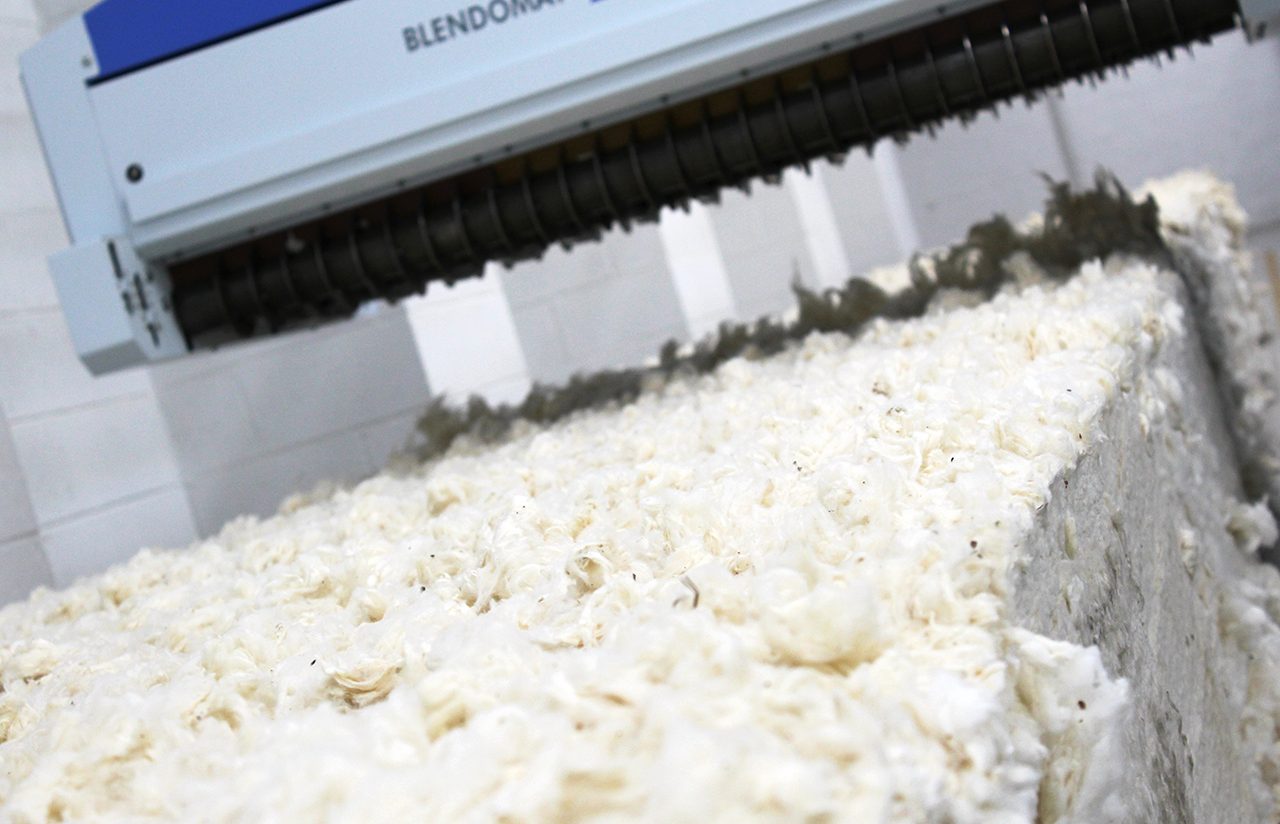

Next the cotton is sent to the carding machines, which disentangle the fibres to form a sliver.
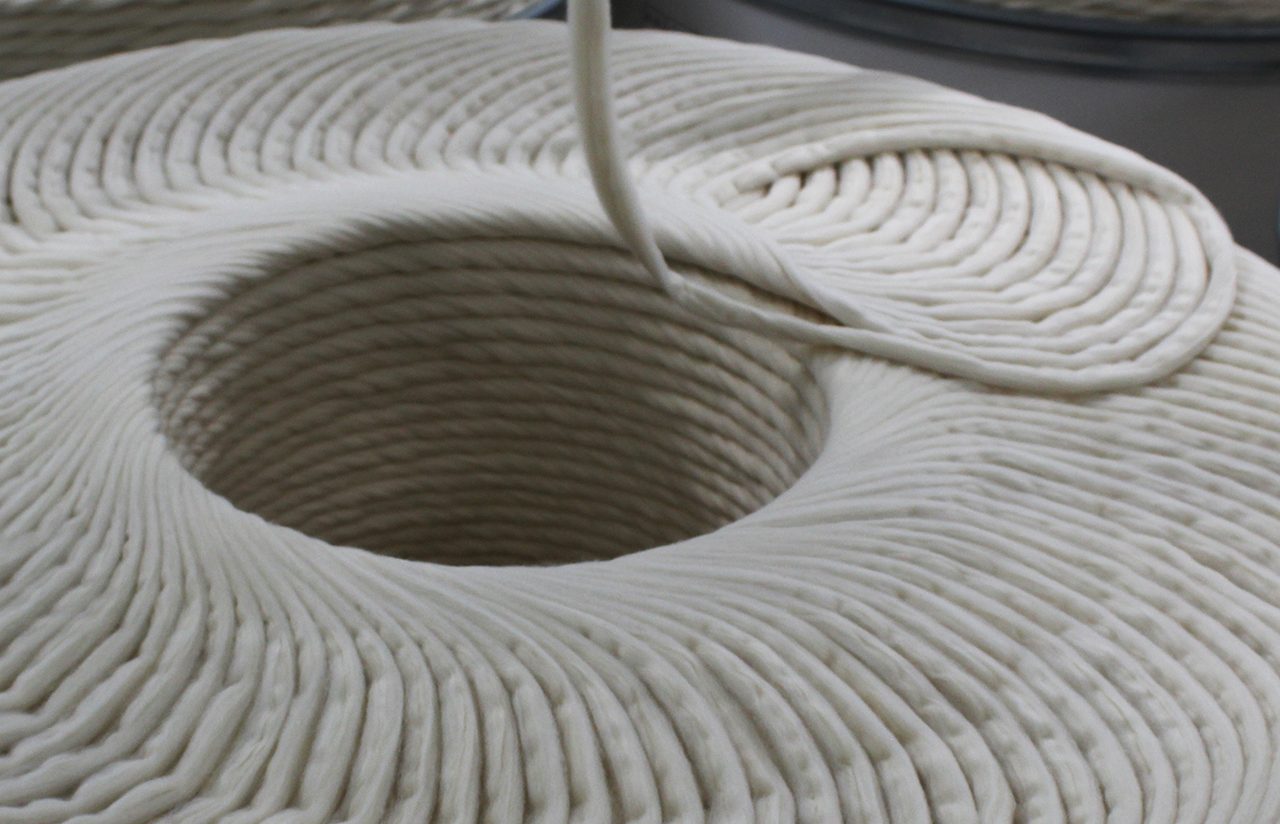
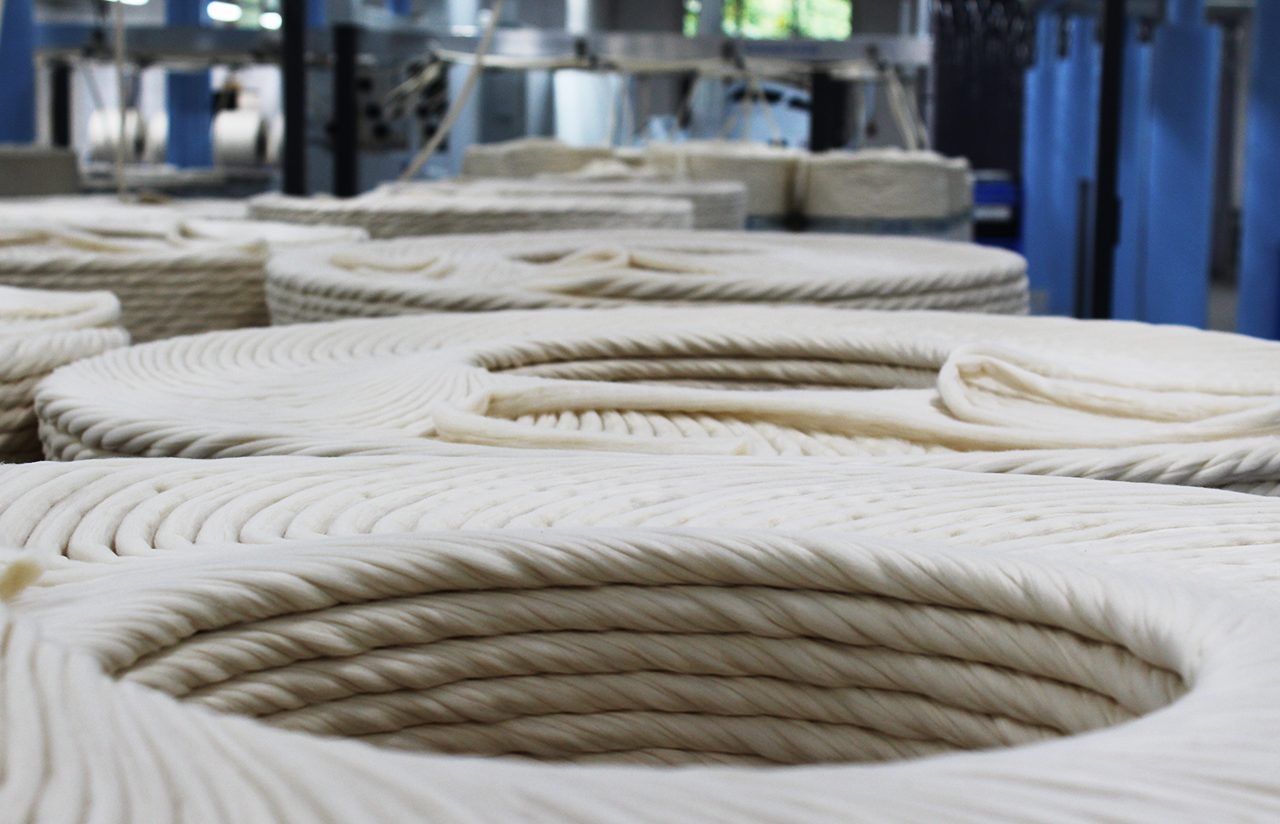
The sliver reduces in thickness when it is drafted on the drawframe and the sliver cans are a lot smaller by the time they reach the lapformer.
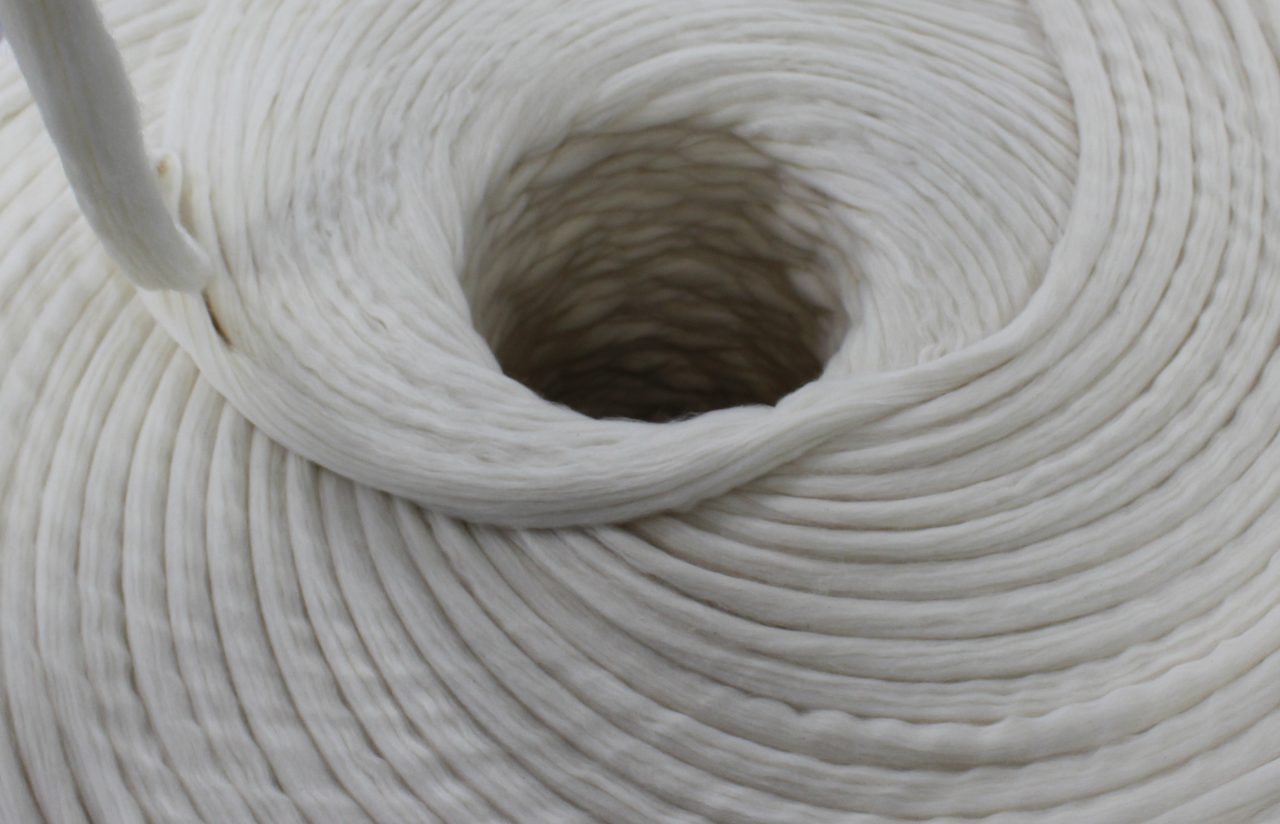
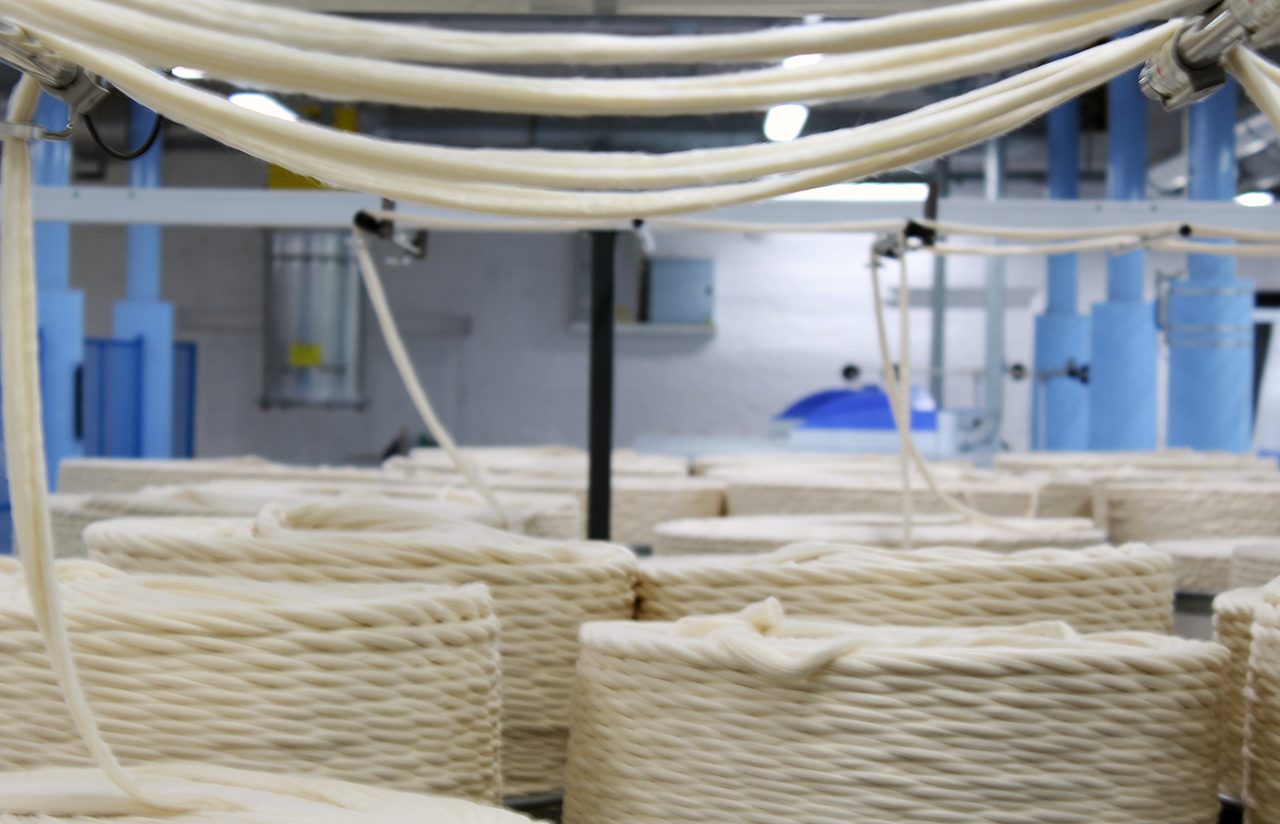
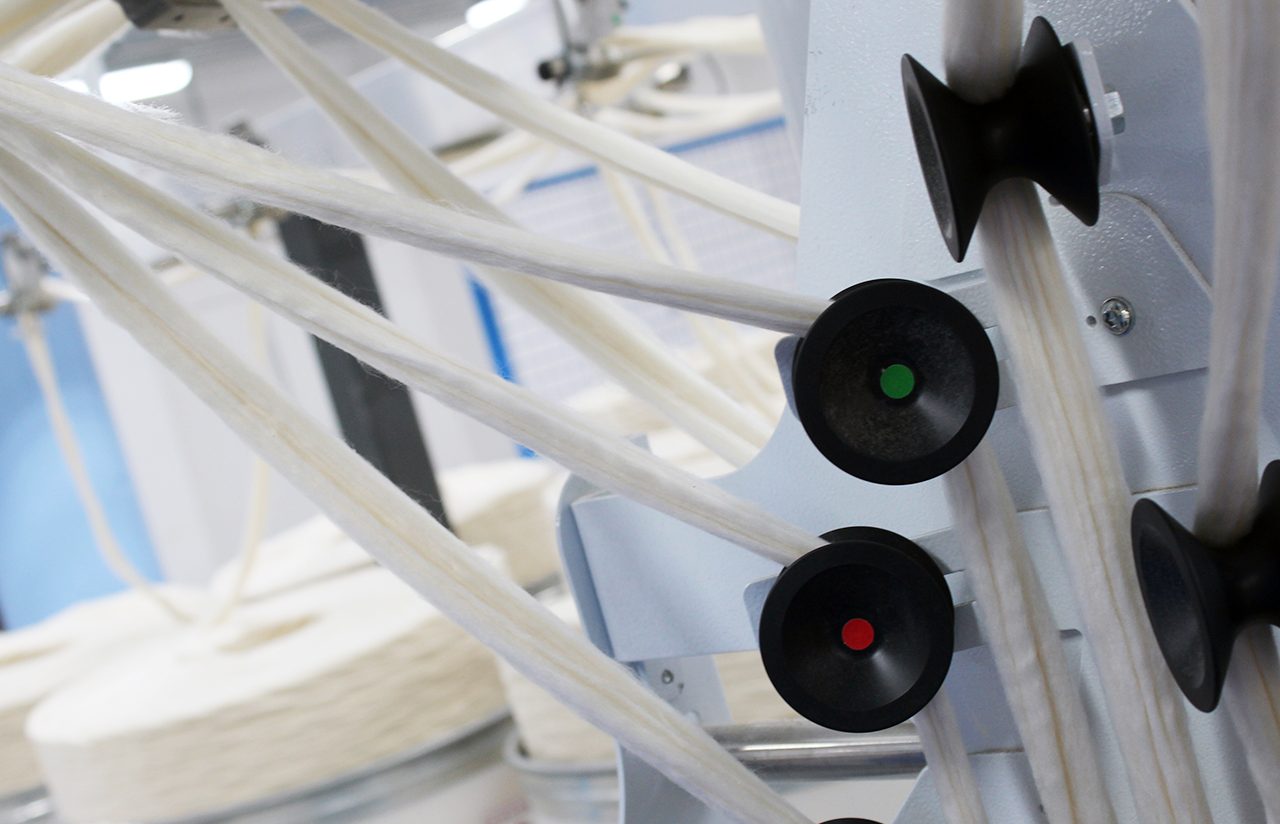
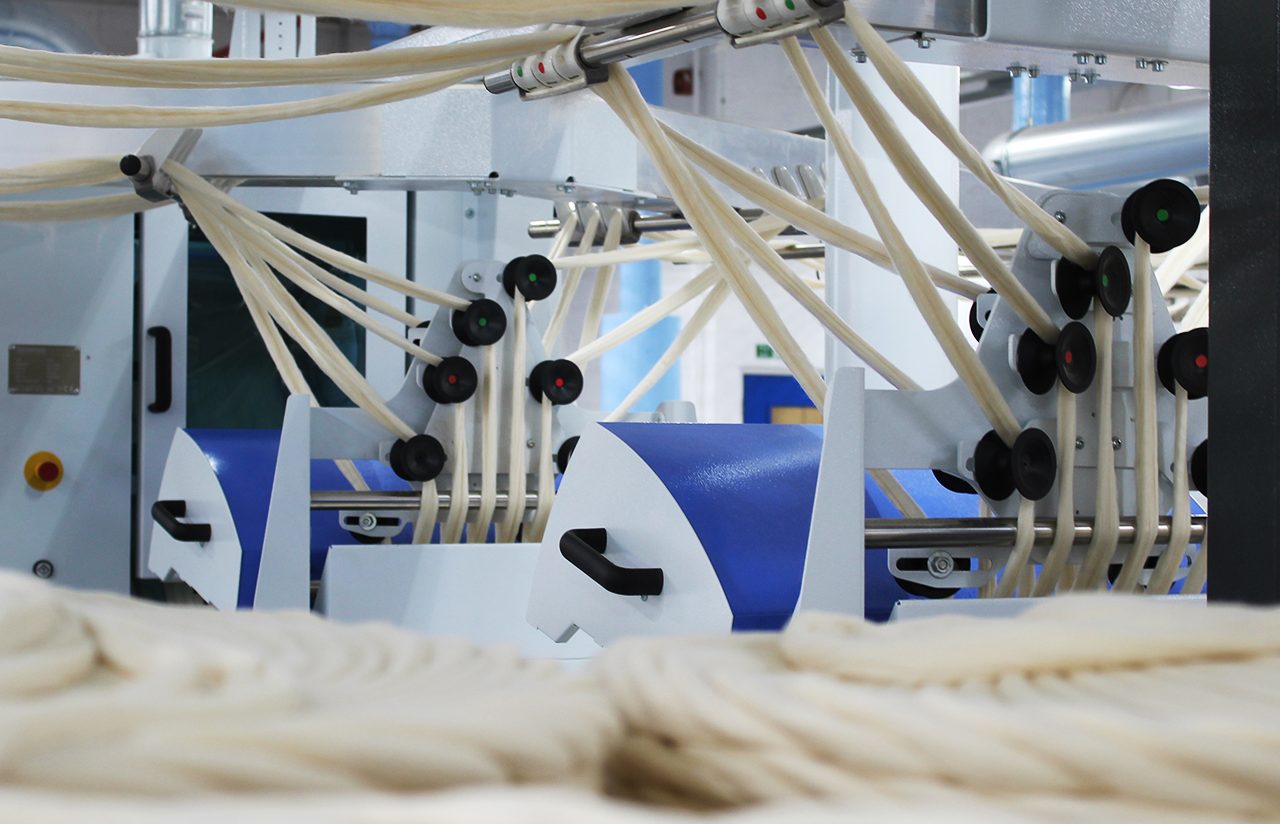
The lap former assembles and wraps the slivers around plastic cores ready for the comber, which removes the short fibres.
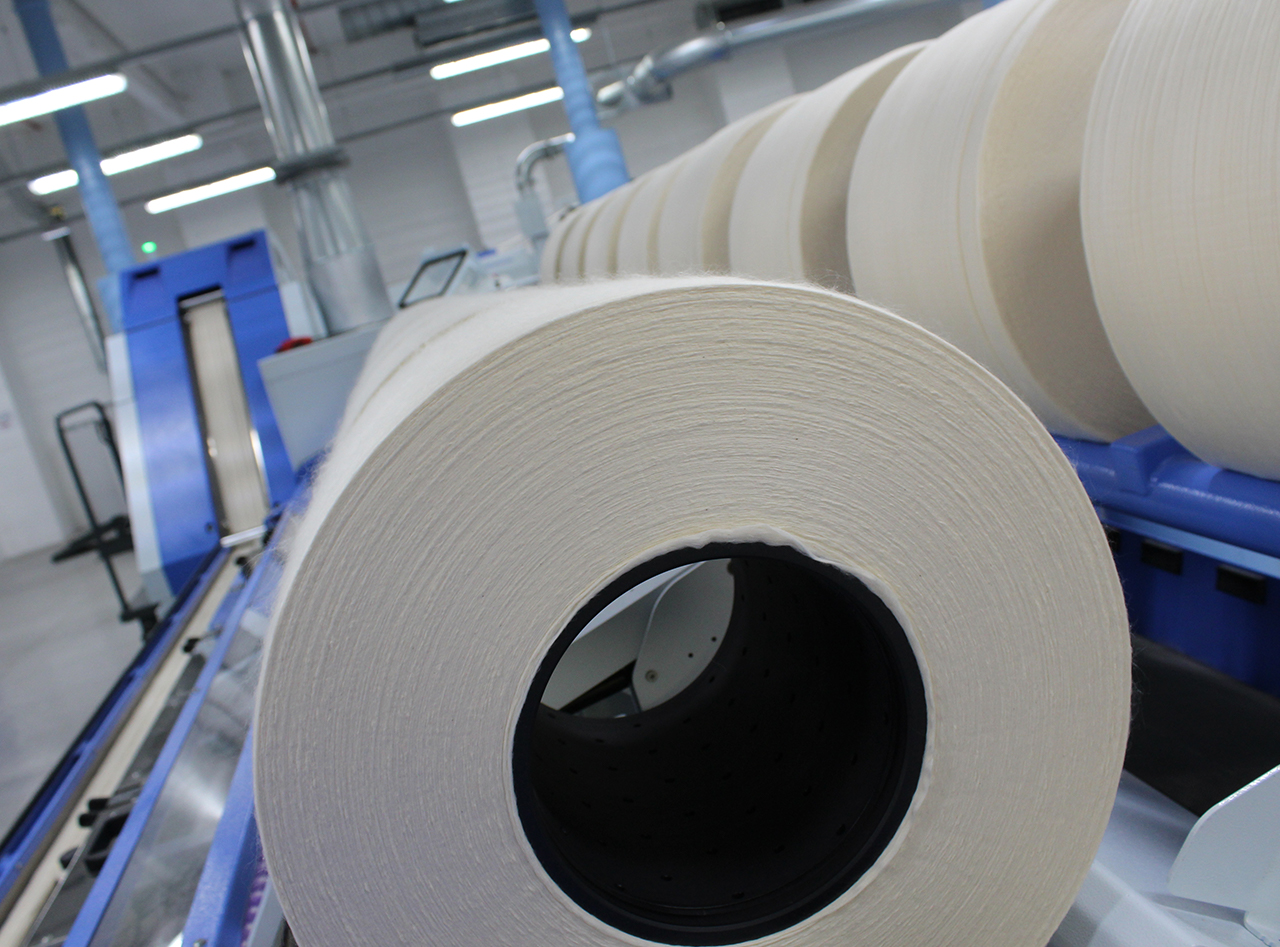
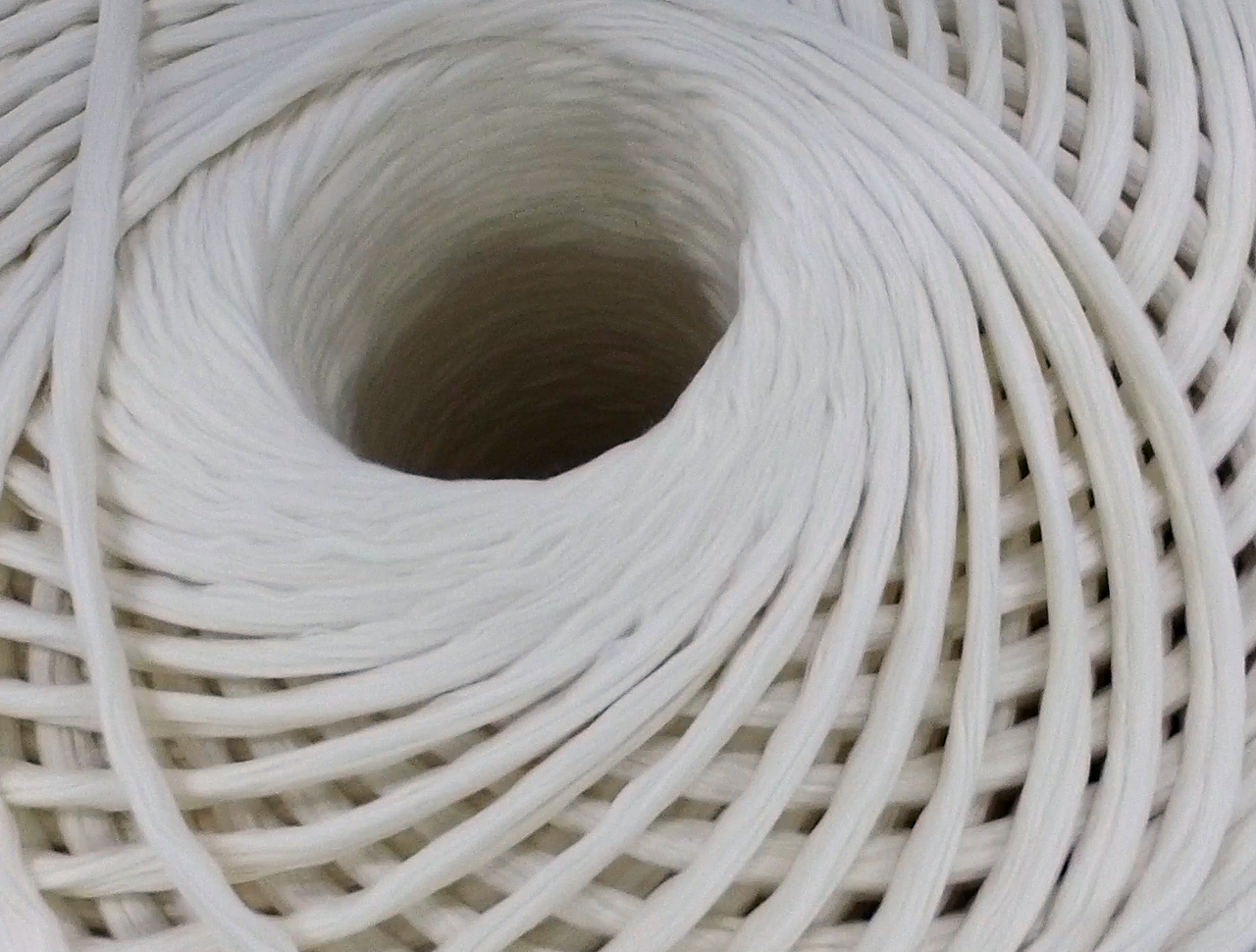
The speed frame reduces the thickness of the sliver again, applies a holding twist and winds it onto roving bobbins ready for spinning.
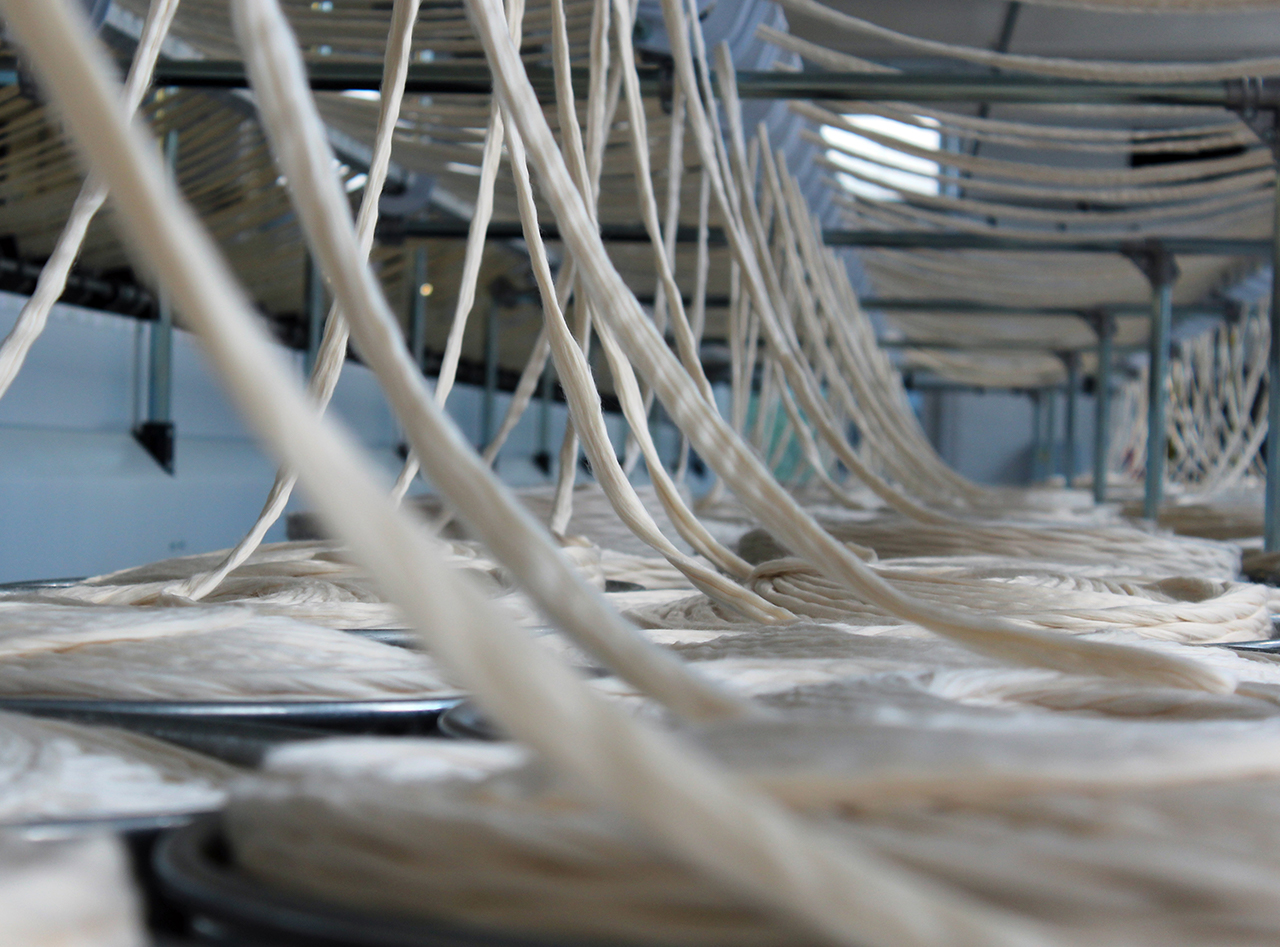
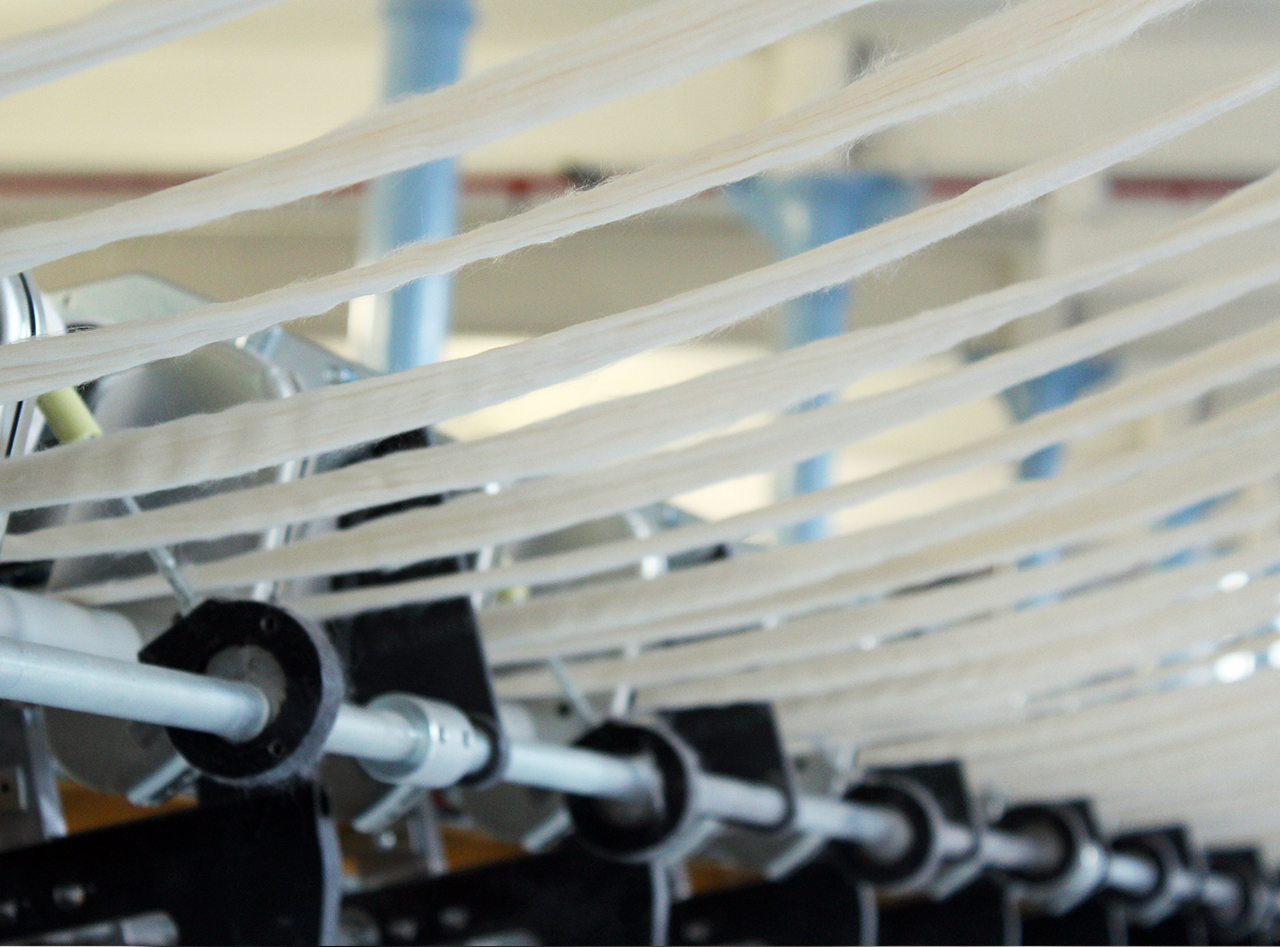

The roving bobbins are loaded on to the ring frames, where they are drafted down to the finished yarn specification and spun onto plastic tubes or ‘cops’.
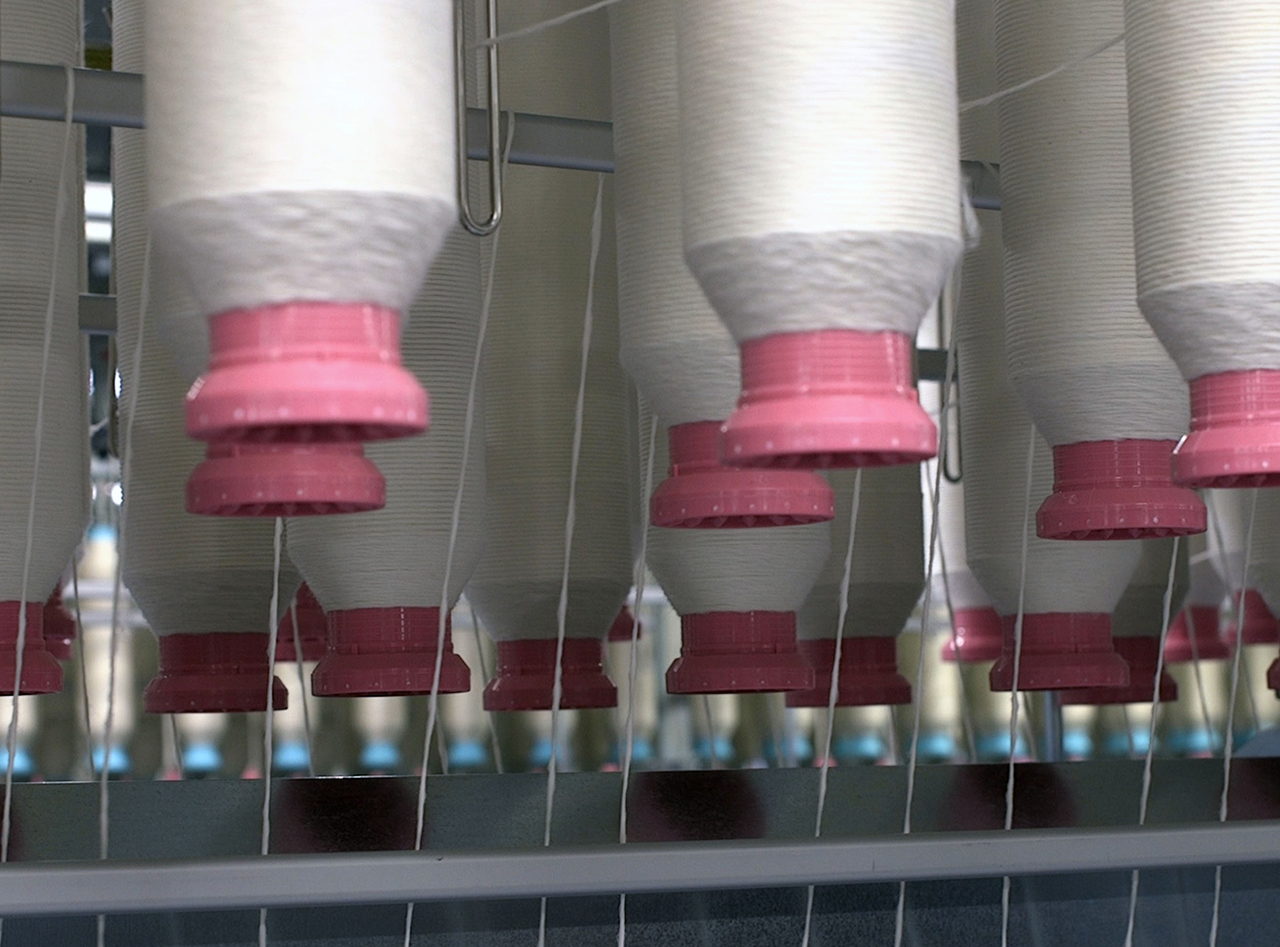
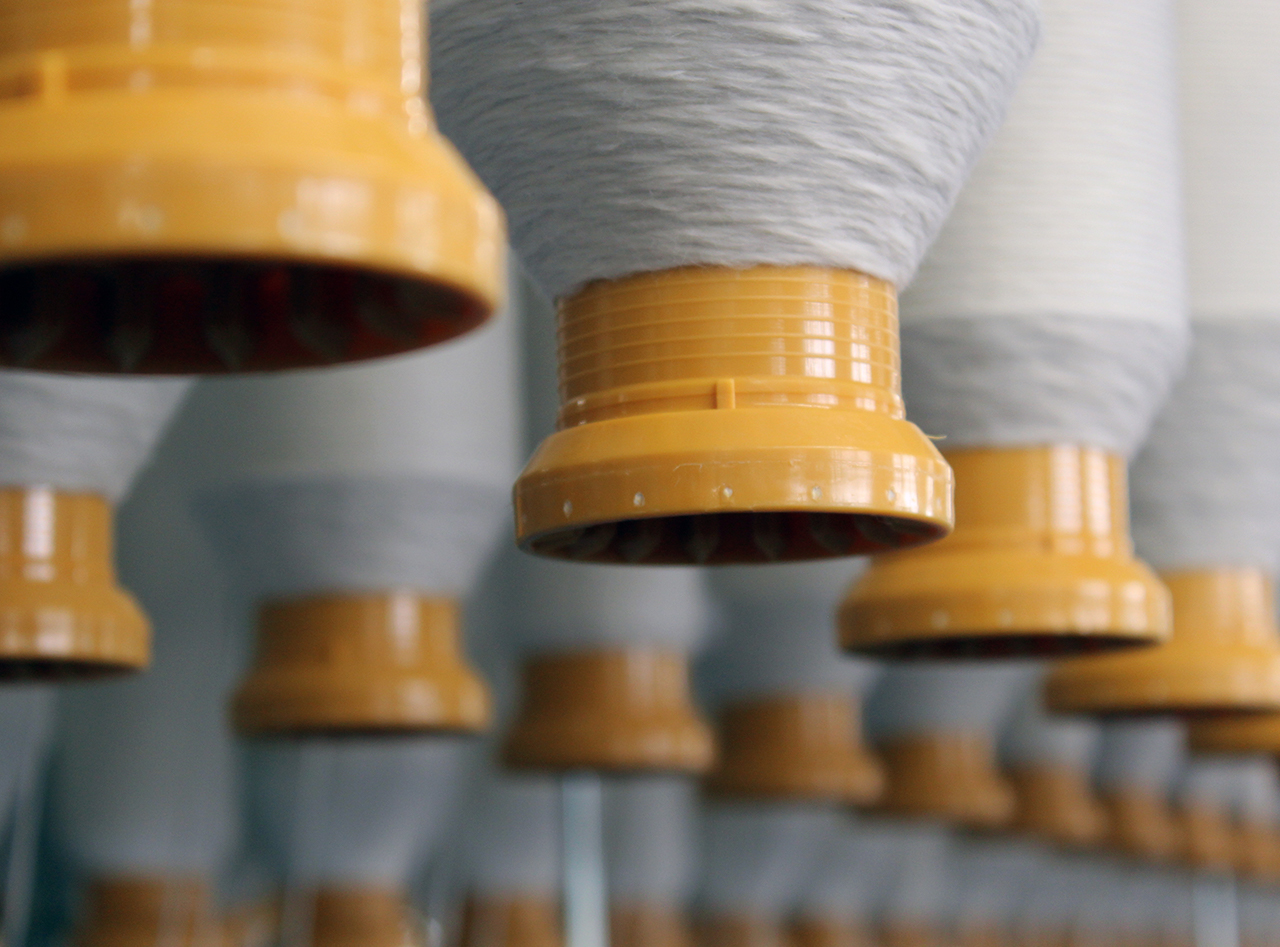


The finished cops of yarn are taken to the Autoconer, where they are wound onto cones. The Autoconer will invisibly splice the yarn while analysing it to detect and remove any faults it finds as it goes.


The yarn can then be plied if required.

